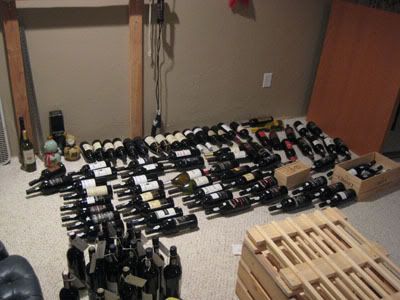I think there are two philosophies to choose from here.
1) Stock manage perfectly, and know exactly what you have and where it is.
2) Buy when the whim to do so inspires you, stow the bottles safely and forget all about them. Then, years later, when browsing for a bottle to drink, discover them afresh to your pleasant surprise.
Option 1) is the choice of the cold, computer assisted, (but cellar limited..) age
Option 2) enjoys a little old word romance, but is intrinsically chaotic!
I must admit that option 2) used to be my preferred way; but was abandoned when i kept finding that after taking home a litle stash, my pleasure was dashed by the discovery that I had already bought the same wine some time before, and had clean forgotton about it...
I now give every bottle a neck tag (a cut down luggage tag) which I find usually holds secure after two half-hitches, but is infallible if given three..
Each tag carries a three digit number followed by a letter. The number is the case number, the letter represents the bottle in the case. If I only bought one bottle of a wine, I still allocate a case number, and the letter will be 'A'
Each rack in my cellar is given a number, each column in that rack is given a letter, and each row in the rack is given a number. This gives me a reference.
Each case gets a line on my main stock database, and each line links to a separate 'case notes' file, derived from a template
On my main stock database, the date of purchase, source, date, shipper, type, format, vintage, quantity, quantity consumed, price and storage location are recorded. Detail regarding condition, levels and drinking history are recorded on the case notes file.
Thus the most recent addition to my cellar records were two bottles.
The main database notes that they were purchased from Christies on July 14th. they were Warre vintage port bottles from 1963, and that the two of them cost me £70. They have been stored in rack 7, column D, rows 17-18 (07D17)
In the case notes file is recorded that they were English bottled by Berry Bros, have only neck tags to confirm identification, and were part of a mixed lot with cost apportioned.
Within the case notes file, each bottle has a dedicated line, which at this point notes the levels to be IN (both of them) and the last date of inspection (31/08/2008) Space is provided for tasting notes to be recorded for each bottle.
Simple!

Tom
I may be drunk, Miss, but in the morning I shall be sober and you will still be ugly - W.S. Churchill


